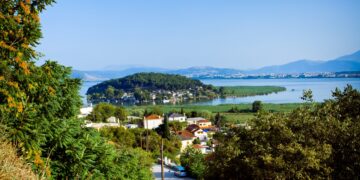Imagine soaking in a warm, mineral-rich pool, feeling the stress and tension melt away from your body. This is the experience that awaits you at Széchenyi Thermal Bath in Budapest.
With its healing waters and serene atmosphere, this historic spa offers a rejuvenating escape from the hustle and bustle of everyday life.
But it’s not just the soothing waters that make Széchenyi Thermal Bath a must-visit destination. From its impressive architecture to its array of spa and wellness facilities, there is so much more to discover. So, why not take a dip into Budapest’s healing waters and immerse yourself in a truly revitalizing experience?
History of Széchenyi Thermal Bath
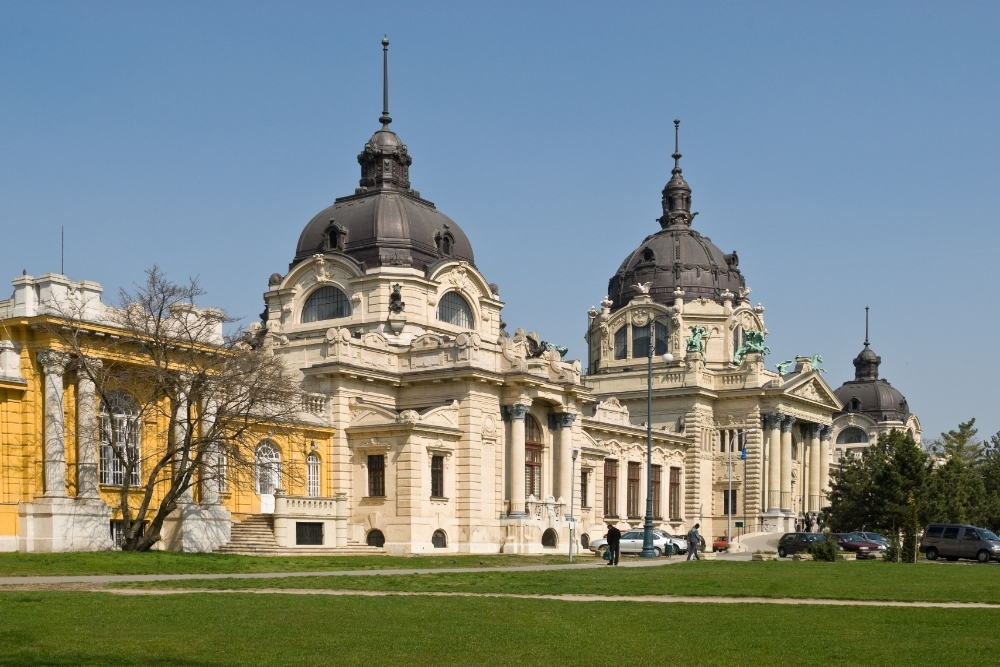
The Széchenyi Thermal Bath in Budapest, a city renowned for its thermal baths, has a rich history that intertwines the development of Budapest’s spa culture with architectural magnificence.
Early Beginnings and Construction: The origins of the Széchenyi Thermal Bath can be traced back to the late 19th century when drilling for wells to supply the Városliget (City Park) with water led to the discovery of thermal springs. The first temporary bathhouse was established in 1881. However, the need for a larger, more permanent structure soon became apparent due to the popularity of the thermal waters.
Architectural Development: In the early 20th century, construction began on what would become the Széchenyi Thermal Bath. Built between 1909 and 1913 in a grand Neo-Baroque style, the bath was named after István Széchenyi, a prominent Hungarian statesman. The design was a reflection of the era’s architectural trends and Budapest’s burgeoning status as a spa city.
Expansion and Modernization: Initially, the bath complex included only a few pools. Over the years, it expanded to accommodate more visitors and offer a wider range of services. The bath was extensively renovated and modernized in the late 20th and early 21st centuries, which included the addition of new pools and the improvement of existing facilities.
Today’s Bath: Today, the Széchenyi Thermal Bath stands as one of the largest spa complexes in Europe, featuring a multitude of pools (both indoor and outdoor), saunas, and a range of therapeutic services. It’s renowned not just for its healing waters, which come from two thermal springs, but also as a social and cultural hub where activities like chess are played in the pools, reflecting a unique blend of relaxation and recreation.
Cultural Significance: The Széchenyi Thermal Bath is not just a place for relaxation and therapy; it’s a symbol of Budapest’s spa culture and an architectural landmark. Its significance goes beyond mere functionality, embodying the city’s rich history and the social life of its residents.
Five facts about Széchenyi Thermal Bath in Budapest
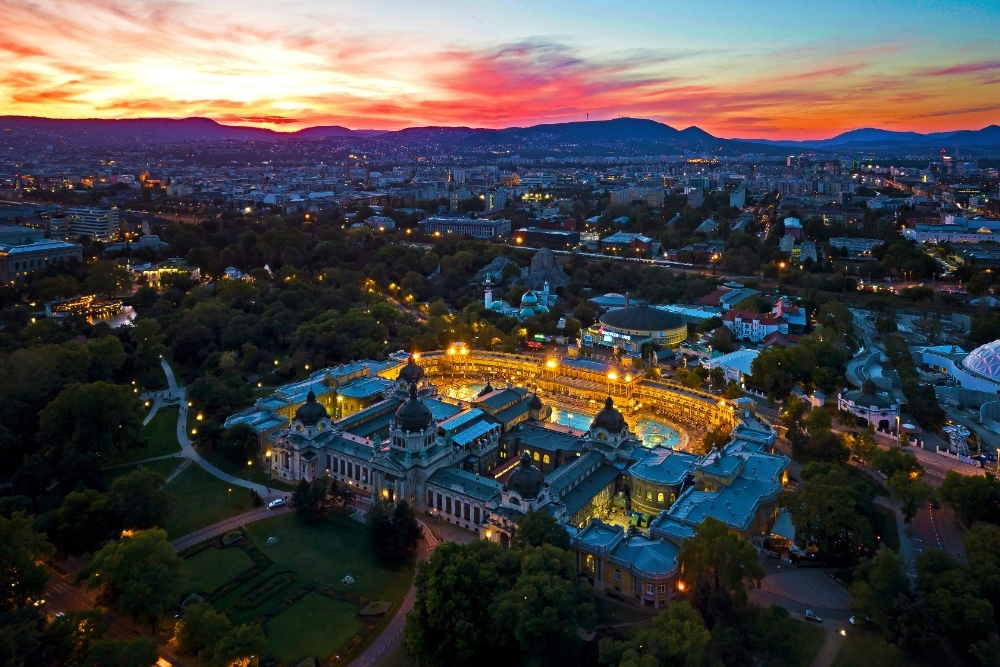
1 Historical and Architectural Significance: Constructed between 1909 and 1913 in Neo-Baroque style, the Széchenyi Thermal Bath is not just a spa but a historical monument. It was named after the Hungarian count István Széchenyi and is known for its stunning architecture.
2 Thermal Springs and Variety of Pools: The bath is fed by two thermal springs with temperatures of 74°C and 77°C. It boasts 21 pools, including three outdoor and 18 indoor pools, each with distinct water compositions and temperatures, offering various health benefits.
3 Wide Range of Services: Széchenyi Thermal Bath offers more than just bathing. Visitors can enjoy various spa treatments, including massages, pedicures, sauna, steam rooms, and even unique offerings like beer spas. The facility also provides wellness and beauty services.
4 Operational Since Early 20th Century: The bath has been operational since 1913, making it one of the first and largest medicinal baths in Europe. It has undergone various transformations over the years to become a popular urban spa.
5 Cultural and Recreational Activities: Beyond its spa services, the Széchenyi Thermal Bath is culturally significant, with activities like chess being played in the pools, which is a common sight. This blends relaxation with cultural pastimes, adding to its unique charm.
Unique Features of the Thermal Bath
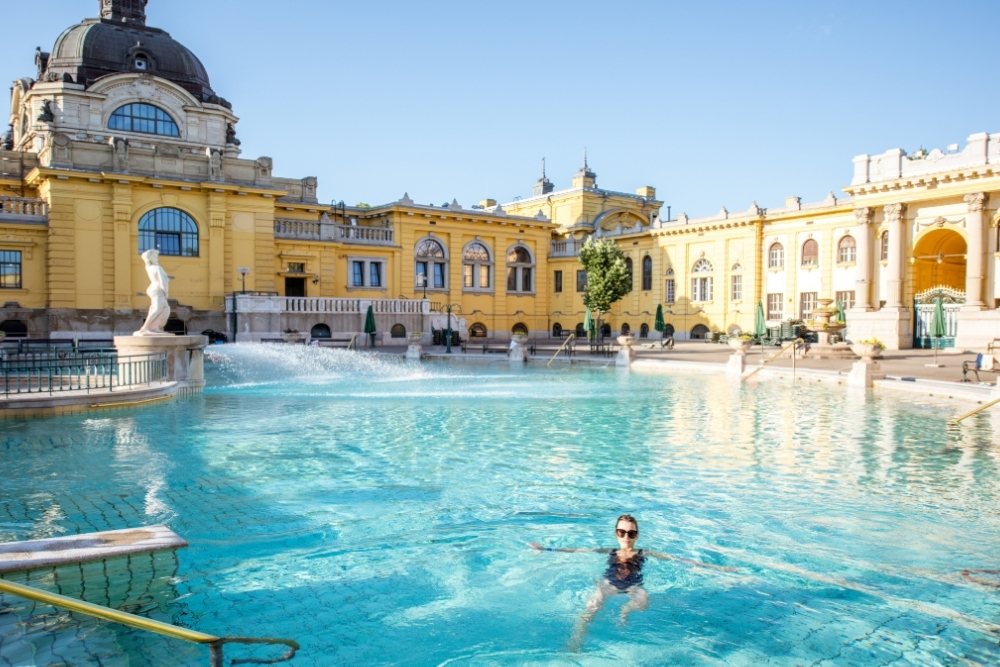
As you explore the Széchenyi Thermal Bath, you will discover a multitude of unique features that set it apart from other thermal baths in Budapest.
One of the standout aspects of this historic bath is its wide range of thermal bath treatments. From traditional thermal baths to massages, saunas, and even mud treatments, Széchenyi offers a variety of options to cater to your specific needs and desires.
Whether you’re looking for relaxation, rejuvenation, or therapeutic healing, the thermal bath treatments at Széchenyi will leave you feeling refreshed and revitalized. Another remarkable feature of the bath is its stunning architecture.
Built in the Neo-Baroque style, the bath’s grand facade and elegant interiors create a truly picturesque setting.
Range of Healing Waters and Benefits
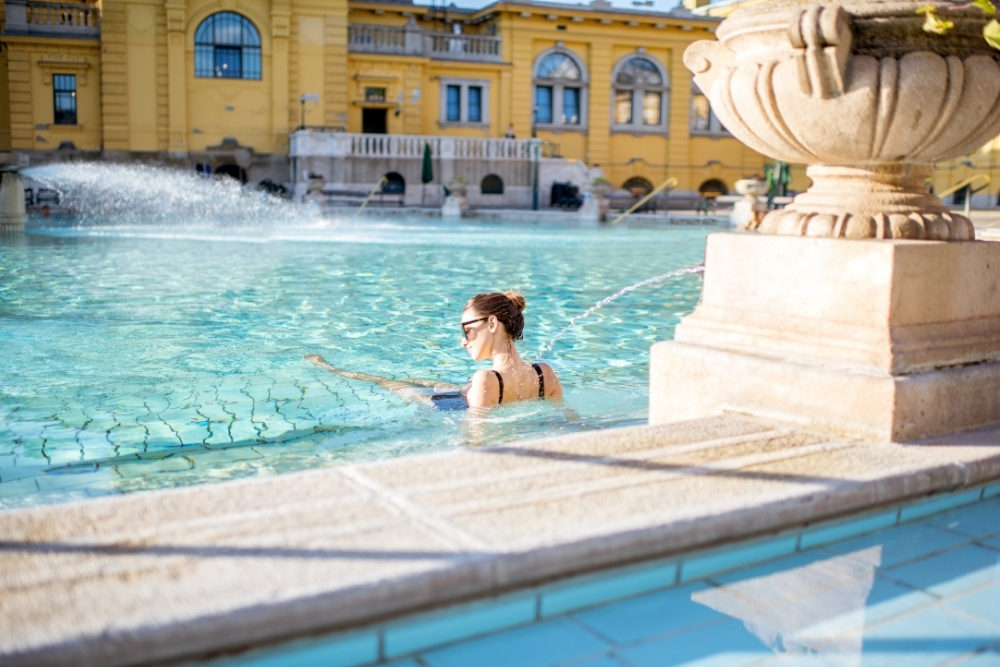
Immerse yourself in a diverse array of healing waters that offer a range of therapeutic benefits at the Széchenyi Thermal Bath.
With its numerous thermal pools, each with its own unique healing properties, you can find the perfect treatment for your specific needs. The thermal water in the bath contains minerals such as calcium, magnesium, and sulfates, which have been known to alleviate joint pain, reduce stress, and improve blood circulation.
The high mineral content of the water also helps to cleanse and rejuvenate the skin, leaving you feeling refreshed and revitalized. In addition to the thermal pools, the Széchenyi Thermal Bath offers a variety of therapeutic treatments, including massages, mud baths, and underwater gymnastics.
Whether you’re looking to relax and unwind or seeking relief from a specific ailment, the healing waters of Széchenyi Thermal Bath have got you covered.
Spa and Wellness Facilities at Széchenyi
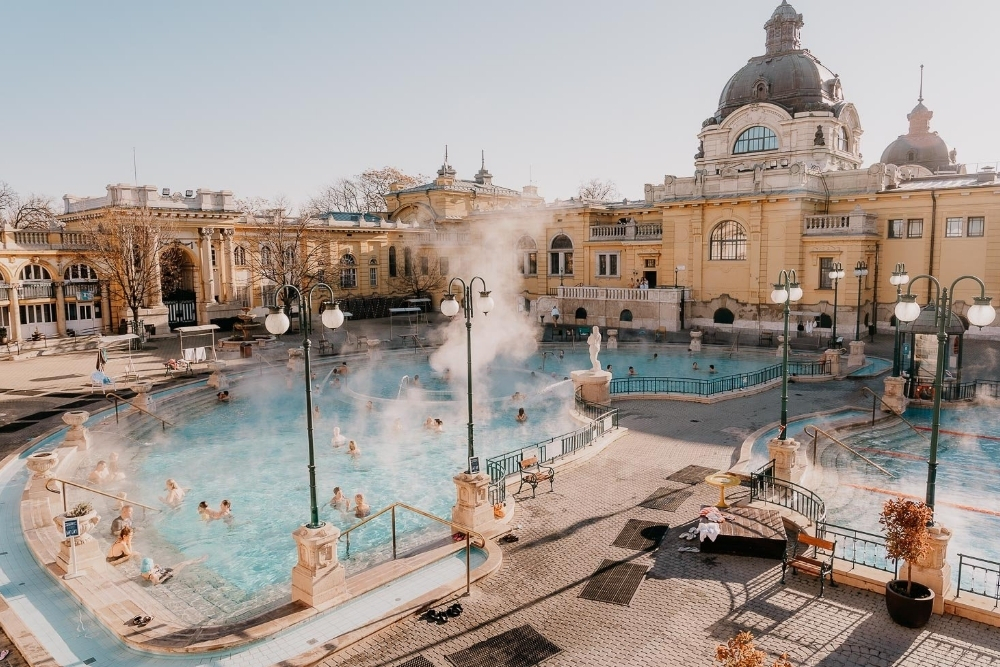
The spa offers a variety of treatments tailored to meet your individual needs, whether you seek deep relaxation, stress relief, or rejuvenation. From invigorating massages to soothing facials, the skilled therapists at Széchenyi are dedicated to providing you with an unforgettable spa experience.
Take a dip in the thermal pools and let the healing waters work their magic on your body and mind. With its historic setting, the spa and wellness facilities at Széchenyi provide the perfect escape for those seeking a serene and rejuvenating experience.
Tips for a Relaxing Visit to Széchenyi Thermal Bath
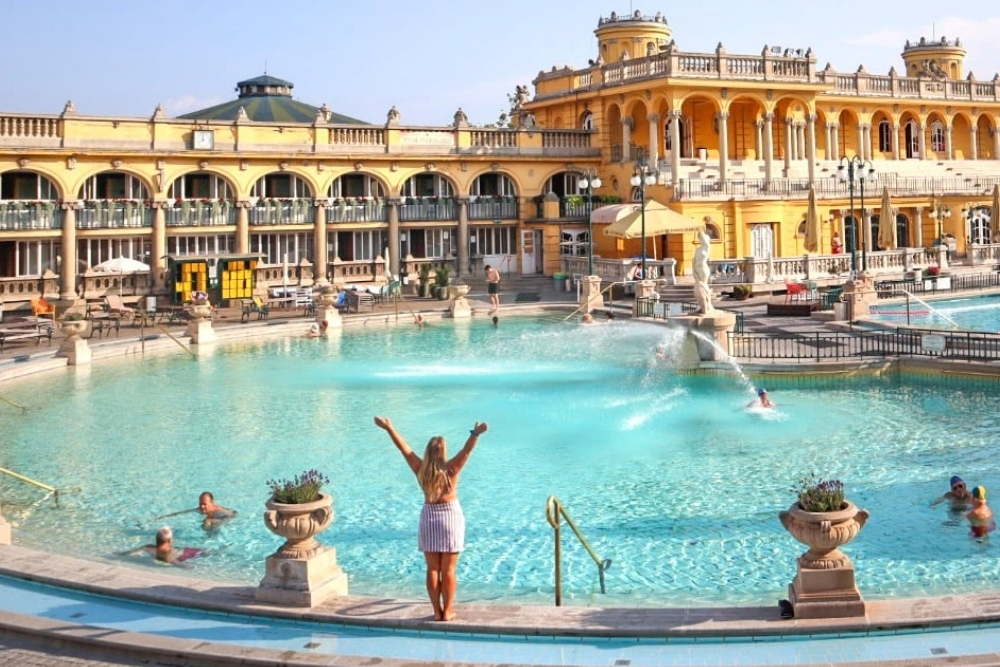
To ensure a truly relaxing visit to Széchenyi Thermal Bath, here are some helpful tips to enhance your experience.
First, arrive early to beat the crowds and have more space to relax. Once inside, make use of the various relaxation techniques available.
Start by immersing yourself in the warm thermal waters, allowing their healing properties to soothe your body and mind.
Take advantage of the massage jets to release any tension in your muscles. Next, try the sauna or steam rooms to detoxify and purify your skin. Don’t forget to take breaks in between to cool down and hydrate.
For ultimate relaxation, book a massage or spa treatment to indulge in some pampering. Lastly, make sure to bring a towel, flip-flops, and a robe for comfort and convenience.
With these tips, you’ll have a truly rejuvenating experience at Széchenyi Thermal Bath.
Exploring the Surroundings of the Thermal Bath
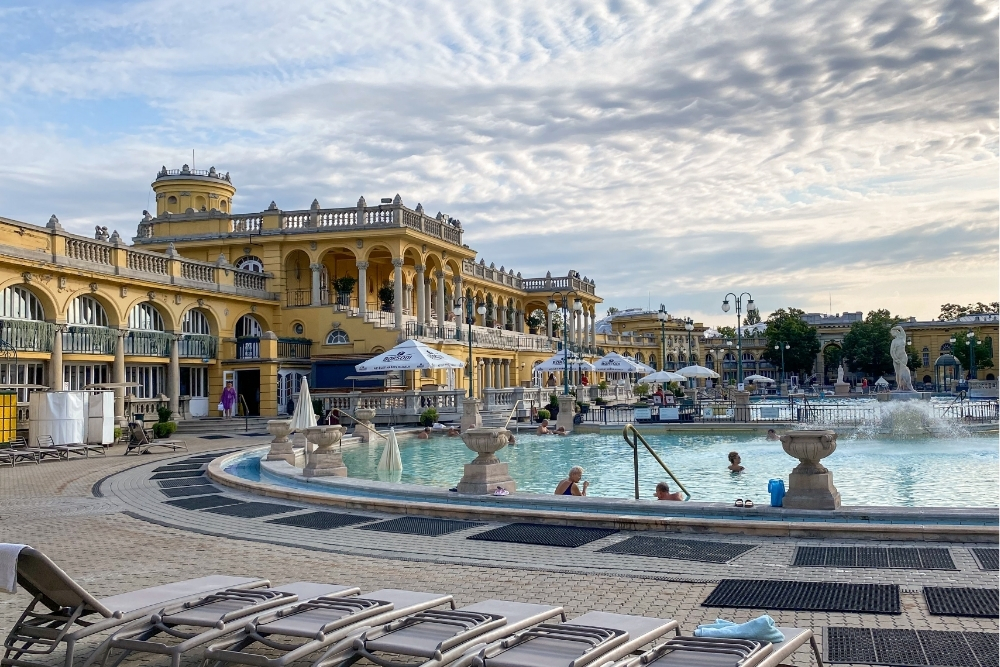
As you step out of the Széchenyi Thermal Bath, a world of exploration awaits in the surrounding areas.
Just a short walk away, you’ll find the enchanting City Park, a sprawling green oasis filled with trees, gardens, and picturesque pathways.
Take a leisurely stroll and admire the stunning Vajdahunyad Castle, a captivating blend of architectural styles.
If you’re in the mood for some outdoor relaxation, head to the nearby outdoor pools, where you can soak up the sun while enjoying a refreshing swim.
For history buffs, the Heroes’ Square is a must-visit, with its grand statues and monuments honoring Hungary’s national heroes.
And if you’re craving even more culture, the Museum of Fine Arts and the Hungarian State Opera House are just a stone’s throw away.
So why not extend your adventure beyond the thermal bath and discover the hidden gems that Budapest has to offer?
Conclusion
So next time you find yourself in Budapest, don’t miss the chance to visit Széchenyi Thermal Bath. With its rich history, unique features, and range of healing waters, it offers a truly rejuvenating spa experience.
And here’s an interesting statistic: did you know that Széchenyi Thermal Bath is the largest medicinal bath in Europe? So go ahead, relax in the healing waters and discover the wonders of this historic gem.


